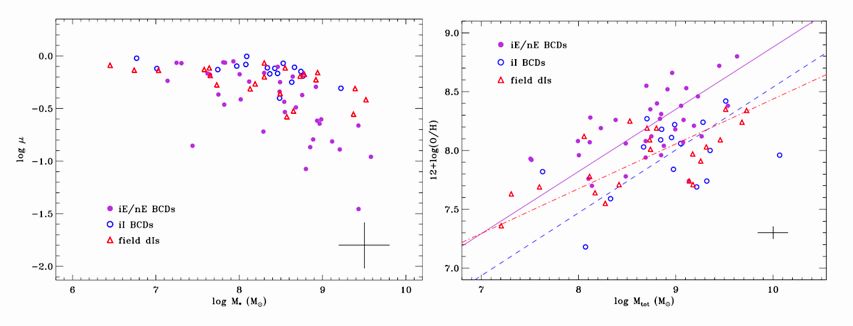Dwarf galaxies are by far the most numerous galaxies in the universe and play a crucial role in our understanding of the formation and evolution of galaxies. They are proposed to be the building-blocks in hierarchical scenarios of galaxy formation. Recently, PMO scientists, Drs Yinghe Zhao and Yu Gao, and their collaborator, Dr Qiusheng Gu (NJU) published a paper about their studies on the gaseous and chemical properties of a relatively large sample of blue compact dwarf galaxies (BCDs). They presented results of correlations (see, e.g Fig 1) among the oxygen abundance, stellar mass, gas mass, baryonic mass, and gas fraction both for E- and I-type BCDs, which are classified according to Loose & Thuan and show elliptical and irregular outer haloes, respectively. These correlations of I-type BCDs show slopes similar to those of E-type ones. However, in general, E-type BCDs are more gas-poor and metal-rich than I-type ones at a given baryonic mass. Based on these results, they suggested that E-type BCDs, at least a part of them, and I-type ones might be likely at different evolutionary phases and/or having different progenitors. Their investigation of the correlation between oxygen abundance and gas fraction shows that BCDs appear to have not evolved as isolated systems, but to have experienced some gas flows and/or mergers.

By with ZHAO Yinghe
Fig 1: (left) Distribution of gas fraction as a function of stellar mass for BCDs and dIs. The cross in the bottom right gives the typical error bar of the BCD sample. More massive systems have lower gas fractions. (right) Correlation between oxygen abundance and the total baryon mass (Mgas +M*), with the cross showing the typical error bar of the BCD sample.
|
